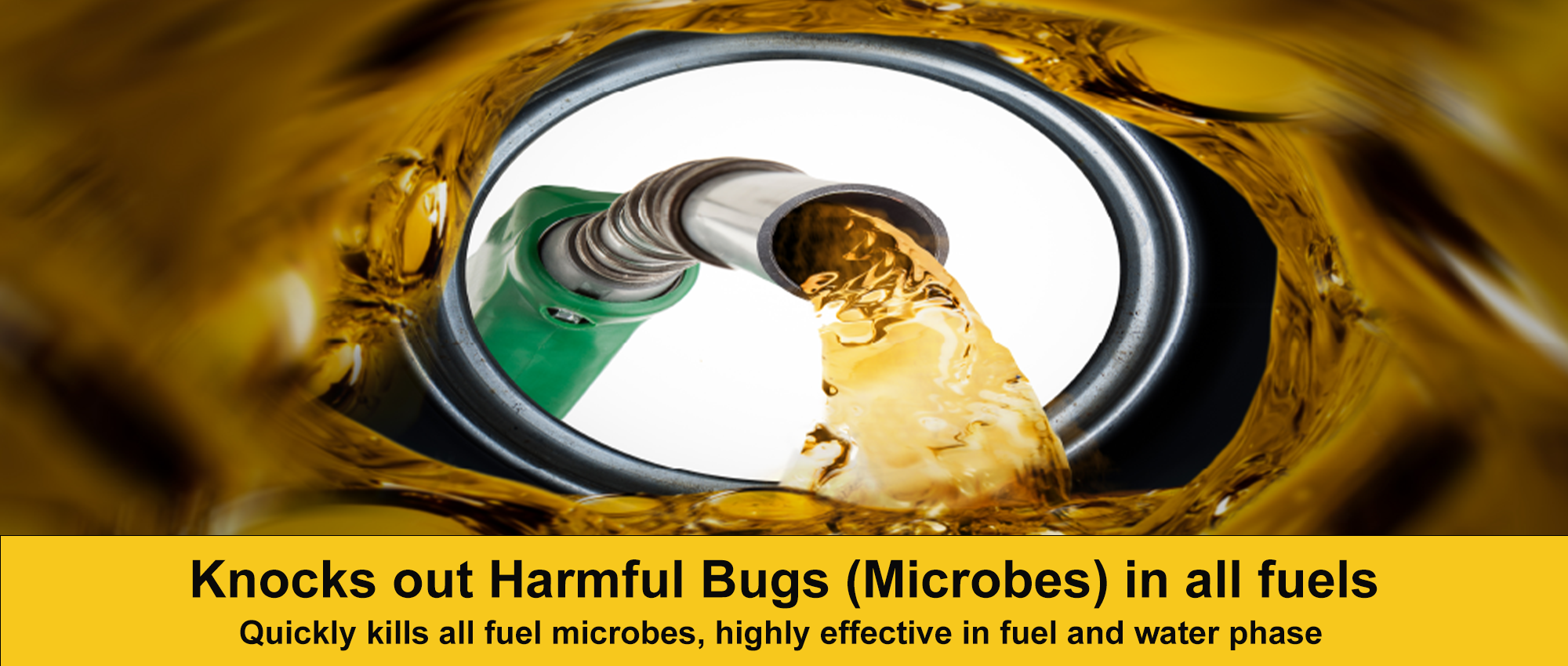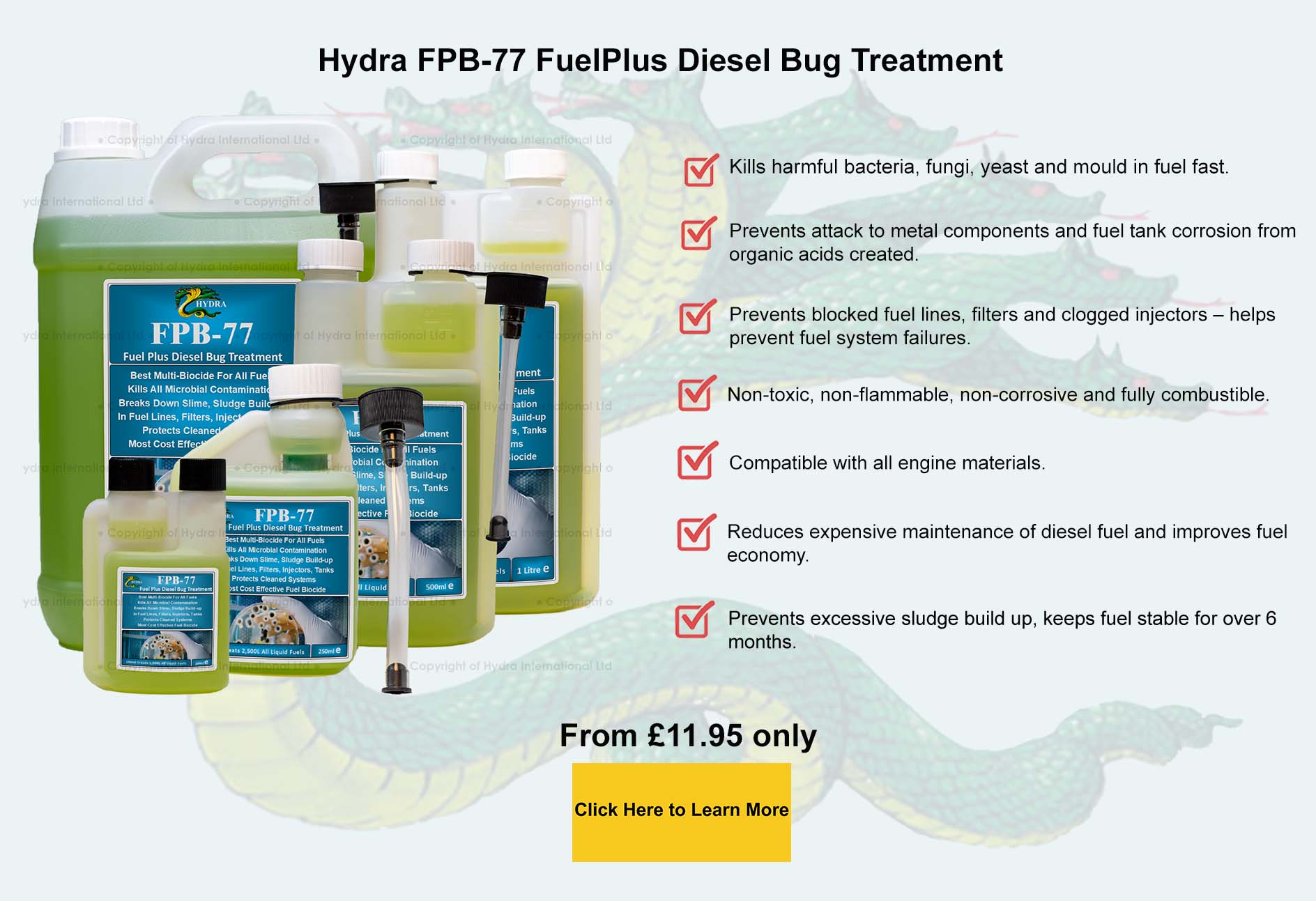Eliminating Harmful Microbes (Bugs) From Your Fuel Tank9 November 2020 | Admin 
Hydra FuelPlus Multi-Biocide 
Fuel TanksFuels left for storage in fuel tanks will always contain some water. The amount of water present will gradually increase with time. The longer the fuel is left undisturbed the more water it will contain. As freshly refined fuel cools down, its water solubility decreases. Henceforth, moisture, which was previously dissolved in the fuel begins to drop out of the fuel. This process continues throughout the fuel’s cooling process even during transport. As fuel’s specific gravity is lower than that of water, as dissolved water condenses it tends to drop out of fuel, accumulating in tank bottoms and in pipeline low-points. Fuels are usually stored for a considerably long time before it reaches the customer therefore will always contain some water. Biological diesel such as (FAME), tends to hold more water than the conventional diesel. The accumulated water is an ideal environment for the microbes to thrive and contaminate the fuel severely compromising the consistency and quality of the fuel. Thus technical challenges are faced by Company’s in bulk storage and in vehicles since all fuel types, especially low sulphur, and biological diesel can exhibit particular problems that cause difficulties in operation. The fuels in storage, especially bio-diesel can absorb moisture from its surroundings, this can lead to microbial infestation and fuel bug issues. Fuel tanks/storages in hot countries can accumulate nearly 0.1% water depending on the volume and type of fuel as a result of condensation during long-term storage. Microbial infestation including the growth of microbes such as moulds, fungi, and bacteria if left untreated during long term storage, can severely affect the fuel quality. This microbial attack leads to degradation of fuel, decreased in lubricity as fuel additives are broken down by the harmful microbes. 
| 
